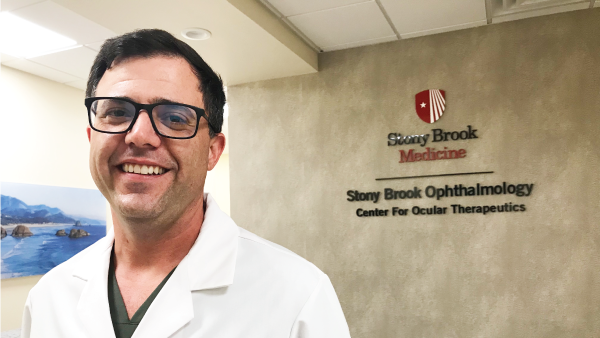The Mosaic Effect of GA
Investigating the mental health impact of geographic atrophy
Geographic atrophy (GA), a leading cause of blindness that affects more than five million people worldwide, currently has no approved treatment in the UK. Aside from its direct impact, the disease also affects patients’ mental and financial state, as well as the wellbeing of those close to them. The MOSAIC study – survey-based research presented at the European Society of Ophthalmology Congress 2023 – seeks to uncover the GA burden on both patients and their carers. Here, Christiana Dinah, Ophthalmology Specialty Co-lead of the North West London Clinical Research Network and Macula Service and Research Lead at Central Middlesex Hospital, talks to us about the key findings.
What stood out for you in the MOSAIC study?
I was struck by the many simple day-to-day activities affected by living with GA. Reading mail, paying bills, and walking in unfamiliar places are impossible tasks for over 50 percent of the study participants. Over 90 percent of those who stopped driving gave up because of their eyesight. This is in addition to what the study tells us about the direct financial impact of having GA in terms of increased expenses (for example, reading aids and taxis). The MOSAIC study also highlights the plight of unpaid caregivers, who are clearly doing the heavy lifting and taking on significant tasks to enable people living with GA to maintain a good quality of life.
Can you talk more specifically about the mental health impact of a GA?
Almost two thirds of patients with GA worry about their eyesight all of the time. Study participants describe the fear of losing their independence, as well as feelings of frustration, embarrassment, and losing control. There is also an impact on the mental health of caregivers, who describe feelings of inadequacy; they fear they are not doing enough and yet feel conflicted about juggling other responsibilities.
The impact on the emotional wellbeing of patients is not well recognized, which is probably why it is poorly supported (and there is limited signposting to the support that does exist). It is almost a case of “out of sight, out of mind.” Many people face losing their vision without any professional support along the way.
Fortunately, there are treatments on the horizon – and there’s a significant increase in clinical trials investigating therapies for GA. Put another way, there is hope that the era of untreatable GA is coming to an end. In addition, the Macular Society has established local groups that offer information, support, and friendship with like-minded people.
What more can UK institutions and charities do to support those living with GA?
As the MOSAIC study shows, people living with GA struggle with many facets of life. However, the nature of the disease may mean that their best corrected visual acuity is “good” and thus does not reflect the resulting loss of function, especially in those with bilateral disease. I am concerned that many such people are not referred into hospital eye services until they’re significantly advanced. Means-tested government support for OCT scans at community optometrists will help in this regard, preventing the development of an access gap and unwarranted variation across the country. I am also concerned that sight impairment certification thresholds may not adequately capture all those with GA who require the support that being certified provides. We need to review them.
The MOSAIC results suggest that support for eye charities to create mental health hubs – where people with GA and their caregivers can be referred for counseling and psychotherapy – would be beneficial. We also need to evaluate the possibility of community optometrists being able to certify sight impairment to hasten access to practical and financial support for people that meet the criteria. Ultimately, given the aging population, the cost of sight loss due to GA is immense to those affected, their caregivers, and to society as a whole. And it is only predicted to rise. We need the government to continue to support research into our understanding of GA so that we can collectively prevent sight loss from this disease.
The New Optometrist Newsletter
Permission Statement
By opting-in, you agree to receive email communications from The New Optometrist. You will stay up-to-date with optometry content, news, events and sponsors information.
You can view our privacy policy here
Sign up to The New Optometrist Updates
Permission Statement
By opting-in, you agree to receive email communications from The New Optometrist. You will stay up-to-date with optometry content, news, events and sponsors information.
You can view our privacy policy here
Sign up to The New Optometrist Updates
Permission Statement
By opting-in, you agree to receive email communications from The New Optometrist. You will stay up-to-date with optometry content, news, events and sponsors information.
You can view our privacy policy here







